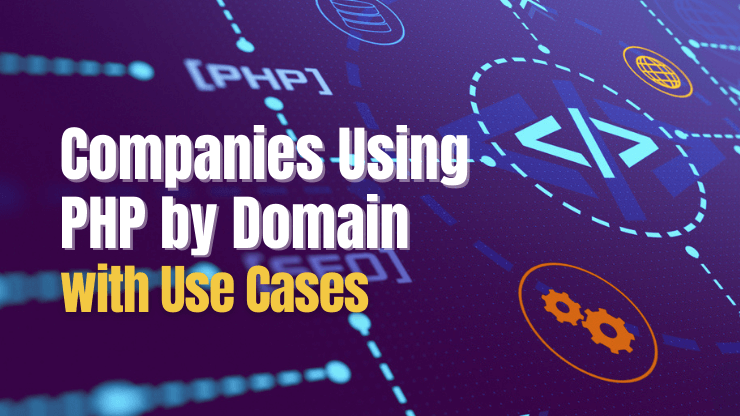
What database does Magento use?
How critical is the role of databases in Magento? What database system does Magento primarily use? Has there been any significant changes in its database use and why should it matter to Magento users and developers? The Magento e-commerce platform uses a particular kind of database for various reasons and understanding this can provide valuable insight for those interested in this topic.
According to several authoritative sources such as Adobe’s official documentation and tech experts from DCKAP, a Magento enterprise solution partner, there have been challenges associated with Magento’s choice of database. It’s reported that some users encounter scalability issues, and maintaining high performance with bigger databases can be tricky. These issues prompted inquiries and debates, driving towards a more effective database solution. Moreover, surveys in the USA show a considerable number of users expressing concerns over these database problems, thereby solidifying the need to address this issue.
In this article, you will learn more about Magento’s choice of database and why it leans towards this particular system. This piece will delve into how Magento’s database infrastructure plays out to its functionalities, the problems Magento users often encounter, and what potential improvements could be beneficial in the future.
Beyond that, it will analyse how a different choice of database could impact Magento as a platform and its wide range of users. Of course, the advantages and disadvantages of the current database system in use will also be thoroughly elucidated, providing better understanding and insights for the reader.

Simple Definitions and Understandings of Magento’s Database
Magento is a powerful and flexible open-source ecommerce platform. It’s popular among businesses because of its many capabilities for online sales and business operations.
Database is a structured set of data stored in a computer or server. It’s like a warehouse for information, making it easy to access, manage, and update data when necessary.
Magento uses a technology known as MySQL for its database. MySQL is an open-source relational database management system (RDBMS) based on Structured Query Language (SQL). It’s used for adding, removing, and modifying information in the database. It’s well-regarded for its speed, reliability, and ease of use, hence making it highly suitable for ecommerce platforms like Magento.
Challenging the Status Quo: How Magento Redefines eCommerce with Its Database Use
Magento and MySQL: A Successful Partnership
Magento utilizes MySQL, a relational database system, as its primary database. MySQL is renowned for its reliability, scalability, and performance – essential attributes for an eCommerce platform like Magento. Supported by a global community of developers and engineers, MySQL consistently remains one of the most widely used database systems in the world, powering some of the most visited websites.
Magento’s integration with MySQL offers several benefits to retailers. First, the collaboration makes data storage and retrieval streamlined and smooth, ensuring faster website loading times. Second, the use of SQL, a popular programming language, allows for easy manipulation and management of data. This allows businesses to make adjustments on the fly, updating product details, customer information, and sales data as needed.
How Magento’s Use of MySQL Enhances eCommerce
The flexible data schemas of MySQL enhance Magento’s eCommerce capabilities. By enabling an immaculate management of structured data, it allows for more efficient data segregation and search operations. In such a high-volume transaction-based environment, Magento’s use of MySQL delivers best in class performance and security, meeting the high standards of data organization required in eCommerce.
- Scalability: As your online store grows, MySQL performance scales, ensuring quick site load times even during peak traffic.
- Security: MySQL is known for its robust data security, providing data encryption and secure password management, thus protecting confidential customer and business data.
- Performance: Speed is of the essence for an eCommerce site. MySQL’s ability to handle large databases efficiently ensures that Magento websites load quickly, providing a positive user experience.
In light of these benefits, Magento’s choice of MySQL as its main database is far from random. It indicates a conscious decision to equip its eCommerce platform with a database solution that guarantees speed, security, and scalability – the core pillars of successful online business operation. The integration of Magento and MySQL presents a formidable tech stack that can flexibly scale with growing business, secure user trust with data protection, and impress customers with an efficient shopping experience.
Diving Deep: Understanding the Intricacies of Magento’s Database Management
The Complex Architecture behind Magento’s Database System
Isn’t it interesting how this powerful eCommerce platform can manage thousands of products, customer orders, and other complex operations seamlessly? The secret lies in its robust database management system. Magento makes use of MySQL, a relational database management system. MySQL, an integral part of LAMP (Linux, Apache, MySQL, and PHP), is an efficient, dynamic, and powerful platform that provides Magento with the capabilities to handle enormous data efficiently in real-time. It becomes more critical to understand that the complex organizational hierarchy of Magento’s database serves multiple purposes. It does not only store essential eCommerce data but also ensures a fast data retrieval process.
Managing Magento’s Database: Perceived Burdens and Real Challenges
The sophisticated structure of Magento’s database may act as a double-edged sword. On the one side, it provides unparalleled efficiency and speed; on the other, managing and fine-tuning it can be a significant challenge. The database’s complexity becomes a hurdle because of the number of tables involved and the relationships between them. Even small changes can have far-reaching effects on the overall performance of the eCommerce platform. Moreover, making erroneous changes can potentially lead to data inconsistency issues and other critical problems.
Navigating the Intricacies: Following the Best Practices for Magento Database Management
Understanding can’t be without effective solutions and best practices. The first step in managing Magento’s database correctly is having foundational knowledge about relational databases and how MySQL works. Familiarizing oneself with Magento’s database diagram can also help in understanding the connections between different tables. Regular database repair and optimization can help increase efficiency and speed.
Some specialists recommend using the ‘Magento Database Repair Tool’ to detect and repair any database inconsistencies. Furthermore, keeping database backups cannot be overemphasized when managing and making changes to the complex structure of Magento’s database. It’s also advisable to limit the amount of stored customer data in your database, like old orders and abandoned carts. This helps in maintaining a cleaner, leaner, and more efficient eCommerce platform.
Overall, understanding and correctly managing Magento’s database is not a matter of choice but a necessity in today’s competitive eCommerce landscape. By following best practices, challenges like data inconsistencies and performance issues can be effectively addressed, ultimately enhancing the performance and efficiency of the eCommerce store.
Piercing the Veil: A Closer Look at How Magento’s Database Powers Up eCommerce Platforms
Penetrating Questions about Magento’s Database
Are we truly aware of the intrinsic composition of Magento’s underlying structure that enables it to revolutionize the eCommerce arena? Magento, a remarkably powerful, open-source eCommerce platform, consistently stands at the forefront of online retail. Central to its capabilities is its database, an intricately designed MySQL database, renowned for its speed, reliability, and capabilities.
The Magento database behaves as the backbone of the platform, responsible for storing, organizing, and retrieving all the data necessary for the website to function. From customer details, order history, to product attributes – the database is the epicentre for a myriad of transactions, ensuring a swift, smooth and efficient online shopping experience. Its design, mitigates data redundancy, enhances data integrity and matches the dynamic nature of the eCommerce business. Carefully constructed schema and indexing strategies allow the platform to efficiently manage high-volume data, crucial for scaling eCommerce operations.
Untangling the Web of Complexity
However, as we delve deeper into the labyrinth that is Magento’s database, inherent complexities emerge. The significant issue lies in the database’s architecture – it’s comprised of hundreds of tables, each connected through a web of relationships. Understanding these relationships and how each table interacts with the other is not only complex but crucial for optimal performance. For instance, updating product details in Magento isn’t as straightforward. It involves interactions with several tables that contain diverse product data. Hence, any incoherence, even minor, in managing these tables could lead to performance degradation.
Moreover, database optimisation is a perpetual challenge for Magento developers. A poorly optimised database can cause performance bottlenecks leading to slow page loads that can affect user experience and sales. Therefore, understanding Magento’s database, its structure, relationships, and intricacies, is fundamental for maintaining an efficient eCommerce platform.
Effective Approaches for Harnessing Magento’s Database Potential
Numerous successful approaches have been employed to harness the power of Magento’s database. One such method is efficient database management via techniques such as data indexing. Indexing organizes data allowing the database to locate and retrieve data more quickly. This decreases data retrieval times significantly, improving overall site speeds.
Further, the implementation of certain best practices can also drive the effective use of Magento’s database. These include periodical database cleanups to remove outdated logs and data, optimizing SQL queries for performance, and regularly reviewing the database structure for anomalies. It’s been observed that businesses adhering to these practices often have faster, more efficient eCommerce platforms. These illustrations indicate that despite the complexities of Magento’s database, it is indeed possible to harness its potential efficiently. By understanding and effectively managing its unique architecture, the Magento database can truly be a driving force behind high-performance eCommerce platforms.
Conclusion
How intriguing is it to ponder upon the very heart that powers the omnipotent eCommerce platform, Magento? This beast manipulates the elaborate network of data intricacies with utmost proficiency, and as it turns out, it is the MySQL database that Magento employs for storing its vast data pools. The power of Magento hinges on this impressive relational database management system featuring stark efficiency, versatility, and full-text indexing.
As we unravel the layers of Magento’s relationship with MySQL, we invite you to become a part of our information-packed journey on this blog. We continuously strive to distil complex technicalities into comprehensible knowledge for our readership. Every click on that ‘follow’ button from you motivates us to delve deeper into the tech abyss and resurface with valuable insights. So join us, become an integral part of our engaging community today!
Just as Magento’s features are continually evolving, so does our endeavor to keep you updated on these developments. Rest assured, there will be a host of articles subsequently focusing on the latest Magento releases, its novel features, and how MySQL serves to augment its overall functionality. Until then, do stick around, as we equip ourselves to bring before you the newest, information-rich content, coalesced with useful technical advice and enhanced readability.
F.A.Q.
1. What type of database is used by Magento?
Magento primarily uses MySQL, a relational database management system, as its database system. It is open-source and is renowned for its high performance, reliability, and ease of use.
2. Can Magento connect with other databases except MySQL?
Magento’s primary database is MySQL, but it can connect with other databases using its API. However, this might require technical expertise and careful management to ensure system stability.
3. Is it possible to change the database in Magento?
Yes, it is technically possible to change the database system in Magento. However, it often entails extensive modifications and can lead to software instability if not done correctly.
4. How vital is the database to Magento’s operation?
The database in Magento is critical. It holds all the critical data like product information, customer details, order information, and other e-commerce related data crucial for Magento functionality.
5. How can I optimize the performance of Magento’s database?
To optimize the performance of Magento’s database, you can regularly clean up logs and databases or use database indexing features. You can also enable Flat Catalog for products and categories to improve database performance.









